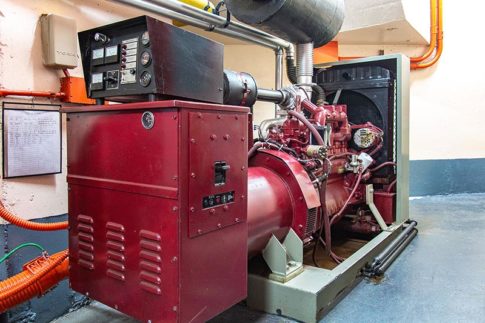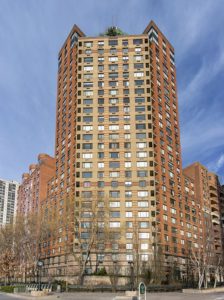
Liberty House Condominium's retrofitted emergency generator enables residents to shelter in place in the event of an emergency.
Liberty House Condominium, a 239-unit, 27-story tower over looking the Hudson River escaped Hurricane Sandy relatively unscathed. The building didn't lose power like the rest of downtown Manhattan (Battery Park City happens to be on the Brooklyn power grid), and it didn't flood, unlike some other buildings along the river. However, living right next to the river, the proactive board at Liberty House didn't want to take any chances with the safety and comfort of the condo's residents considering the increasing likelihood of stronger storms to come.

Located in Battery Park City, Liberty House Condominium is situated right along the Hudson River.
The original generator, which had been in place since the condo was built in 1986, could provide emergency lighting in the stairwells and hallways, power to one of the building's three elevators, and the building's booster pump, which provides water to the top floors in case of a fire. Wanting to ensure that residents could shelter in place in the event of an emergency, the board knew that in its current state, the generator was insufficient, and hired RAND to assess the situation.
Initially, the board wanted to buy a new generator, but the price tag was astronomically high. RAND proposed an upgrade by adding new breaker panels and computerized transfer switches. The retrofit enabled the generator to run both boilers and one elevator, power the emergency lights throughout the building, pump drinking water to the 10,000-gallon rooftop tank, power a pump that circulates domestic hot water, run pressure-boosters for domestic water on the upper floors, and run two sump pumps in the event the basement floods.
The work took about six months and Liberty House was able to cover the cost with their reserve fund without an assessment of increase in common charges.
For more on this project, see the article in Habitat Magazine.
Norbert Gorgowicz is a Project Engineer on RAND's Mechanical, Electrical, and Plumbing Team.
